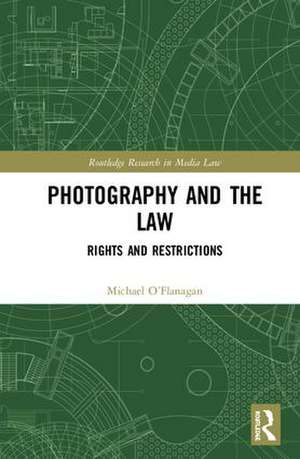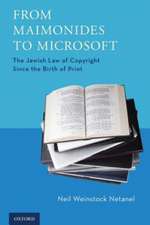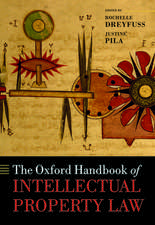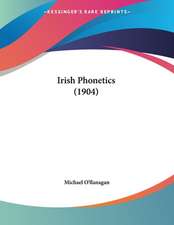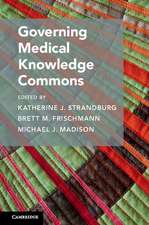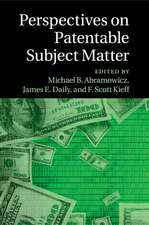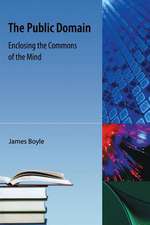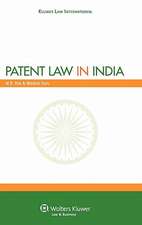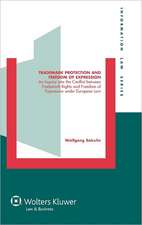Photography and the Law: Rights and Restrictions: Routledge Research in Media Law
Autor Michael O’Flanaganen Limba Engleză Hardback – 5 noi 2018
Photography and the Law investigates the legal limitations faced by professional and amateur photographers and photograph publishers under Irish, UK and EU Law. Through an in-depth discussion of the personal rights of the public, including the right not to be harassed, the book gives a clear analysis of the current legal standpoint on the relationship between privacy and freedom of expression. Additionally, the book looks at the reconciliation of photographers’ rights with the state’s interest in public security and defence, alongside the enforcement of ethical and moral codes. Comparative legal standing in the European Union is used as a springboard to further analyse Irish and UK statutes and case law, including recent reforms and current proposals for future change. The book ends with pertinent suggestions of the necessary reforms and enactments required to rebalance the relationship between the personal rights of individuals, the state’s duties and the protection of photographers’ and photograph publishers’ rights.
By clearly explaining the theoretical and conceptual reasoning behind the current law, alongside proposed reforms, the book will be a useful tool for any student or academic interested in photography law, privacy and media law, alongside professional and amateur photographers and photograph publishers.
| Toate formatele și edițiile | Preț | Express |
|---|---|---|
| Paperback (1) | 259.98 lei 6-8 săpt. | |
| Taylor & Francis – 30 iun 2020 | 259.98 lei 6-8 săpt. | |
| Hardback (1) | 1001.84 lei 6-8 săpt. | |
| Taylor & Francis – 5 noi 2018 | 1001.84 lei 6-8 săpt. |
Preț: 1001.84 lei
Preț vechi: 1221.75 lei
-18% Nou
Puncte Express: 1503
Preț estimativ în valută:
191.70€ • 199.76$ • 158.73£
191.70€ • 199.76$ • 158.73£
Carte tipărită la comandă
Livrare economică 03-17 aprilie
Preluare comenzi: 021 569.72.76
Specificații
ISBN-13: 9781138604773
ISBN-10: 1138604771
Pagini: 252
Dimensiuni: 156 x 234 x 18 mm
Greutate: 0.5 kg
Ediția:1
Editura: Taylor & Francis
Colecția Routledge
Seria Routledge Research in Media Law
Locul publicării:Oxford, United Kingdom
ISBN-10: 1138604771
Pagini: 252
Dimensiuni: 156 x 234 x 18 mm
Greutate: 0.5 kg
Ediția:1
Editura: Taylor & Francis
Colecția Routledge
Seria Routledge Research in Media Law
Locul publicării:Oxford, United Kingdom
Cuprins
Table of Contents
Table of Cases
Table of Legislation
Chapter One: Introduction
Chapter Two: Legal Rights of Photographers and Photograph Publishers
2.1) Introduction
2.2) Rights: Their Origin and Types
2.3) Right of Freedom of Expression
2.4) Development of Photographers’ and Photograph Publishers’ Rights
2.4.1) Universal Declaration of Human Rights, the International Covenant on Civil and Political Rights and the International Covenant on Economic, Social and Cultural Rights
2.4.2) Council of Europe Convention for the Protection of Human Rights and Fundamental Freedoms
2.4.3) Charter of Fundamental Rights of the European Union
2.4.4) Rights under Intellectual Property Conventions and Treaties
2.4.5) Rights under the Constitution of Ireland
2.4.5.1) Freedom of Expression
2.4.5.2) The Right to Communicate
2.4.5.3) Freedom of Expression, the Right to Communicate and the Public Interest
2.4.5.4) Personal Rights
2.4.5.5) Private Property Rights
2.4.6) Photographers’ and Photograph Publishers’ Statutory Rights
2.4.7) Common Law Right to Take Photographs
2.5) Brief Conclusions
Chapter Three: Photographers’ and Photograph Publishers’ Rights under Copyright Law
3.1) Introduction
3.2) Development of Photographers’ and Photograph Publishers’ Rights under Copyright Law
3.3) Copyright and Related Rights Act 2000
3.3.1) Statutory Recognition of Copyright as a Property Right
3.3.2) Statutory Definitions relevant to Copyright in Photographs
3.3.3) Originality in an Artistic Work and the Subsistence of Copyright
3.3.4) Copyright does not subsist in Ideas, Infringing Works or Copies of Made-available Works
3.3.5) Author of a Photograph and First Owner of Copyright in a Photograph
3.3.6) Presumption of knowing a Work’s Author and First Copyright Owner
3.3.7) Duration of Copyright in a Photograph
3.3.8) Qualification for Copyright Protection
3.3.9) Registration of Copyright is not a Legal Requirement for Copyright to Subsist
3.3.10) Copyright Owner’s Rights
3.3.11) Infringement of Copyright
3.3.12) Exempted Acts permitted in respect of Copyrighted Works
3.3.13) Dealings with Rights in Copyrighted Works
3.3.14) Moral Rights
3.3.15) Remedies available for Infringement of Copyright and Moral Rights
3.3.16) Criminal Offences relating to Copyright
3.4) Copyright protection under international conventions and treaties
3.5) Erosion of photographers' rights under copyright law
3.5.1) Copyright Reforms resulting from EU Law
3.5.2) Copyright Law Review and Reform in the United Kingdom
3.5.3) Copyright Law Review and Reform in Ireland
3.5.4) Forsaking Rights under Copyright for Publicity
3.5.5) Clients grabbing Photographers’ Copyright and Moral Rights
3.6) Brief Conclusions
Chapter Four: Legal Restrictions imposed on Photographers and Photograph Publishers to protect
and enforce the Personal Rights of Others
4.1) Introduction
4.2) Restrictions resulting from the Individual’s Right to Privacy
4.2.1) Privacy Rights under the Constitution of Ireland
4.2.2) Privacy Rights under Irish Statutes
4.2.3) Privacy Rights under the European Convention for the Protection of Human Rights and Fundamental Freedoms
4.2.4) Privacy Rights under the Charter of Fundamental Rights of the European Union
4.2.5) Privacy Rights under the Universal Declaration of Human Rights, the ICCPR and its Optional Protocol
4.2.6) Addressing of Privacy Rights by the Courts
4.2.7) Breach of Confidence, Misuse of Private Information and the Right to Privacy
4.2.8) (1) ECtHR balancing of competing Privacy and Freedom of Expression Claims
(2) Public Figure Test in Privacy Claims
4.2.9) Publication of Pixelated Images
4.2.10) Children and their Right to Privacy
4.3) Personal Image Rights and Publicity Rights
4.4) Right against Harassment, Stalking, Revenge Porn and Voyeurism
4.4.1) Harassment
4.4.2) Stalking
4.4.3) Revenge Porn
4.4.4) Voyeurism
4.5) The Right to a Good Name
4.6) The Right to be Forgotten
4.7) Photography and the Property Rights of Others
4.7.1) Private Property Rights and Photography
4.7.2) Publicly-Owned Property and Restrictions on Photography
4.7.3) Photographers and Trespass and Nuisance
4.8) Passing-off: Misrepresentation through the use of Photographs
4.9) Contractual and Accreditation Scheme Restrictions
4.10) Brief Conclusions
Chapter Five: Legal Restrictions on Taking and Publishing of Photographs in support of Public
Interests, through Statutory Provisions, on Public Morality Grounds and under
Ethical Codes of Behaviour
5.1) Introduction
5.2) Restrictions on Photographers and Publishers on the basis of Public Order, Security and Defence of the State and Crime Prevention and Investigation
5.2.1) Public Order
5.2.2) Security and Defence of the State
5.2.3) (1) Unlawful Disclosure of Confidential Information by An Garda Síochána (Police)
(2) Retention of, and Access to, Communications Data
5.2.4) Stop, Search and Seizure Powers of An Garda Síochána (Police)
5.2.5) Stop, Search and Seizure Powers of United Kingdom’s Police
5.3) Restrictions resulting from the Individual’s Right to a Fair Trial
5.4) Restrictions on Court Reporting
5.5) Court Reporting and Contempt of Court
5.5.1) Journalists and Contempt in the Face of the Court
5.5.2) Journalists and Constructive Contempt
5.5.3) Journalists and Scandalising the Court Contempt
5.6) Miscellaneous Statutory Restrictions
5.7) Restrictions on Ground of Public Morality
5.7.1) (1) Censorship of Publications and (2) Pornography
5.7.2) Prohibition of Incitement to Hatred
5.7.3) Outraging Public Decency
5.7.4) Restrictions on Contents of Advertising Materials and of Postal Packets
5.8) Ethical Restrictions
5.8.1) Press Regulation in Ireland
5.8.2) Press Regulation in the United Kingdom
5.8.3) National Union of Journalists
5.8.4) The Irish Professional Photographers’ and Videographers’ Association
5.8.5) Regulation of Advertising and Marketing Communications Standards
5.8.5.1) Advertising Standards Authority of Ireland
5.8.5.2) The Broadcasting Authority of Ireland
5.8.5.3) Advertising Standards Authority (United Kingdom) and Ofcom
5.8.5.4) Sanctions for Breaches of Advertising and Marketing Communications Codes
of Practice
5.9) Brief Conclusions
Chapter Six: Overall Conclusions and Recommendations
6.1) Introduction
6.2) Photographers’ and Photograph Publishers’ Rights under Copyright Law
6.3) Legal Restrictions on Photographers resulting from the Protection and Enforcement of the Personal Rights of Others
6.4) Legal Restrictions on Photographers and Photograph Publishers in support of Public Interests,
through Statutory Provisions, on Public Morality Grounds and under Ethical Codes of Behaviour
Index
Table of Cases
Table of Legislation
Chapter One: Introduction
Chapter Two: Legal Rights of Photographers and Photograph Publishers
2.1) Introduction
2.2) Rights: Their Origin and Types
2.3) Right of Freedom of Expression
2.4) Development of Photographers’ and Photograph Publishers’ Rights
2.4.1) Universal Declaration of Human Rights, the International Covenant on Civil and Political Rights and the International Covenant on Economic, Social and Cultural Rights
2.4.2) Council of Europe Convention for the Protection of Human Rights and Fundamental Freedoms
2.4.3) Charter of Fundamental Rights of the European Union
2.4.4) Rights under Intellectual Property Conventions and Treaties
2.4.5) Rights under the Constitution of Ireland
2.4.5.1) Freedom of Expression
2.4.5.2) The Right to Communicate
2.4.5.3) Freedom of Expression, the Right to Communicate and the Public Interest
2.4.5.4) Personal Rights
2.4.5.5) Private Property Rights
2.4.6) Photographers’ and Photograph Publishers’ Statutory Rights
2.4.7) Common Law Right to Take Photographs
2.5) Brief Conclusions
Chapter Three: Photographers’ and Photograph Publishers’ Rights under Copyright Law
3.1) Introduction
3.2) Development of Photographers’ and Photograph Publishers’ Rights under Copyright Law
3.3) Copyright and Related Rights Act 2000
3.3.1) Statutory Recognition of Copyright as a Property Right
3.3.2) Statutory Definitions relevant to Copyright in Photographs
3.3.3) Originality in an Artistic Work and the Subsistence of Copyright
3.3.4) Copyright does not subsist in Ideas, Infringing Works or Copies of Made-available Works
3.3.5) Author of a Photograph and First Owner of Copyright in a Photograph
3.3.6) Presumption of knowing a Work’s Author and First Copyright Owner
3.3.7) Duration of Copyright in a Photograph
3.3.8) Qualification for Copyright Protection
3.3.9) Registration of Copyright is not a Legal Requirement for Copyright to Subsist
3.3.10) Copyright Owner’s Rights
3.3.11) Infringement of Copyright
3.3.12) Exempted Acts permitted in respect of Copyrighted Works
3.3.13) Dealings with Rights in Copyrighted Works
3.3.14) Moral Rights
3.3.15) Remedies available for Infringement of Copyright and Moral Rights
3.3.16) Criminal Offences relating to Copyright
3.4) Copyright protection under international conventions and treaties
3.5) Erosion of photographers' rights under copyright law
3.5.1) Copyright Reforms resulting from EU Law
3.5.2) Copyright Law Review and Reform in the United Kingdom
3.5.3) Copyright Law Review and Reform in Ireland
3.5.4) Forsaking Rights under Copyright for Publicity
3.5.5) Clients grabbing Photographers’ Copyright and Moral Rights
3.6) Brief Conclusions
Chapter Four: Legal Restrictions imposed on Photographers and Photograph Publishers to protect
and enforce the Personal Rights of Others
4.1) Introduction
4.2) Restrictions resulting from the Individual’s Right to Privacy
4.2.1) Privacy Rights under the Constitution of Ireland
4.2.2) Privacy Rights under Irish Statutes
4.2.3) Privacy Rights under the European Convention for the Protection of Human Rights and Fundamental Freedoms
4.2.4) Privacy Rights under the Charter of Fundamental Rights of the European Union
4.2.5) Privacy Rights under the Universal Declaration of Human Rights, the ICCPR and its Optional Protocol
4.2.6) Addressing of Privacy Rights by the Courts
4.2.7) Breach of Confidence, Misuse of Private Information and the Right to Privacy
4.2.8) (1) ECtHR balancing of competing Privacy and Freedom of Expression Claims
(2) Public Figure Test in Privacy Claims
4.2.9) Publication of Pixelated Images
4.2.10) Children and their Right to Privacy
4.3) Personal Image Rights and Publicity Rights
4.4) Right against Harassment, Stalking, Revenge Porn and Voyeurism
4.4.1) Harassment
4.4.2) Stalking
4.4.3) Revenge Porn
4.4.4) Voyeurism
4.5) The Right to a Good Name
4.6) The Right to be Forgotten
4.7) Photography and the Property Rights of Others
4.7.1) Private Property Rights and Photography
4.7.2) Publicly-Owned Property and Restrictions on Photography
4.7.3) Photographers and Trespass and Nuisance
4.8) Passing-off: Misrepresentation through the use of Photographs
4.9) Contractual and Accreditation Scheme Restrictions
4.10) Brief Conclusions
Chapter Five: Legal Restrictions on Taking and Publishing of Photographs in support of Public
Interests, through Statutory Provisions, on Public Morality Grounds and under
Ethical Codes of Behaviour
5.1) Introduction
5.2) Restrictions on Photographers and Publishers on the basis of Public Order, Security and Defence of the State and Crime Prevention and Investigation
5.2.1) Public Order
5.2.2) Security and Defence of the State
5.2.3) (1) Unlawful Disclosure of Confidential Information by An Garda Síochána (Police)
(2) Retention of, and Access to, Communications Data
5.2.4) Stop, Search and Seizure Powers of An Garda Síochána (Police)
5.2.5) Stop, Search and Seizure Powers of United Kingdom’s Police
5.3) Restrictions resulting from the Individual’s Right to a Fair Trial
5.4) Restrictions on Court Reporting
5.5) Court Reporting and Contempt of Court
5.5.1) Journalists and Contempt in the Face of the Court
5.5.2) Journalists and Constructive Contempt
5.5.3) Journalists and Scandalising the Court Contempt
5.6) Miscellaneous Statutory Restrictions
5.7) Restrictions on Ground of Public Morality
5.7.1) (1) Censorship of Publications and (2) Pornography
5.7.2) Prohibition of Incitement to Hatred
5.7.3) Outraging Public Decency
5.7.4) Restrictions on Contents of Advertising Materials and of Postal Packets
5.8) Ethical Restrictions
5.8.1) Press Regulation in Ireland
5.8.2) Press Regulation in the United Kingdom
5.8.3) National Union of Journalists
5.8.4) The Irish Professional Photographers’ and Videographers’ Association
5.8.5) Regulation of Advertising and Marketing Communications Standards
5.8.5.1) Advertising Standards Authority of Ireland
5.8.5.2) The Broadcasting Authority of Ireland
5.8.5.3) Advertising Standards Authority (United Kingdom) and Ofcom
5.8.5.4) Sanctions for Breaches of Advertising and Marketing Communications Codes
of Practice
5.9) Brief Conclusions
Chapter Six: Overall Conclusions and Recommendations
6.1) Introduction
6.2) Photographers’ and Photograph Publishers’ Rights under Copyright Law
6.3) Legal Restrictions on Photographers resulting from the Protection and Enforcement of the Personal Rights of Others
6.4) Legal Restrictions on Photographers and Photograph Publishers in support of Public Interests,
through Statutory Provisions, on Public Morality Grounds and under Ethical Codes of Behaviour
Index
Notă biografică
Michael O’Flanagan was awarded a Ph.D. in Law by the National University of Ireland Galway for his doctoral research on the topic "Taking and Publishing Photographs: The Legal Rights and Restrictions".
His research work was funded by the University’s School of Law’s R.D.J. Glynn Doctoral Research Fellowship. Prior to undertaking his Ph.D., he graduated from the University of Limerick with a Bachelor of Laws (Hons.), a Bachelor of Business Studies (specialising in Marketing Management) and a Diploma in Business Studies (specialising in Personnel Management). He was also awarded a Graduateship of the Marketing Institute of Ireland. A Licentiate of the Irish Professional Photographers’ & Videographers’ Association and a freelance photographer member of the National Union of Journalists, to-date he has won 71 awards (5 Gold, 45 Silver and 21 Bronze Awards) for his photographic work at the Irish Professional Photographers’ & Videographers’ Association’s Annual Photographer of the Year Awards. The creation and implementation of national and international advertising, promotional and public relations campaigns featuring high quality photographs has formed an integral element of his marketing management experience over the past four decades.
His research work was funded by the University’s School of Law’s R.D.J. Glynn Doctoral Research Fellowship. Prior to undertaking his Ph.D., he graduated from the University of Limerick with a Bachelor of Laws (Hons.), a Bachelor of Business Studies (specialising in Marketing Management) and a Diploma in Business Studies (specialising in Personnel Management). He was also awarded a Graduateship of the Marketing Institute of Ireland. A Licentiate of the Irish Professional Photographers’ & Videographers’ Association and a freelance photographer member of the National Union of Journalists, to-date he has won 71 awards (5 Gold, 45 Silver and 21 Bronze Awards) for his photographic work at the Irish Professional Photographers’ & Videographers’ Association’s Annual Photographer of the Year Awards. The creation and implementation of national and international advertising, promotional and public relations campaigns featuring high quality photographs has formed an integral element of his marketing management experience over the past four decades.
Descriere
Photographers and publishers of photographs enjoy a wide range of legal rights. They may invoke their intellectual, moral and property rights to protect and enforce their rights in their created and/or published works. These rights are not absolute. This book analyses the various legal restrictions and prohibitions, which may affect these rights.
